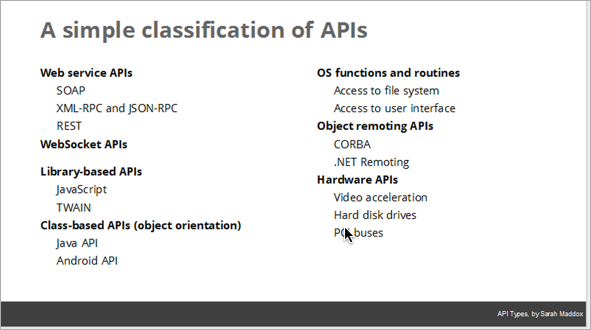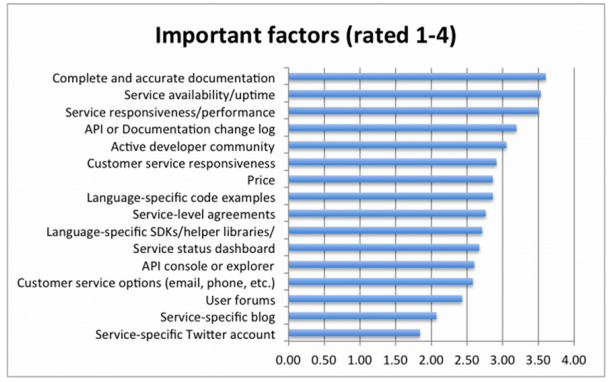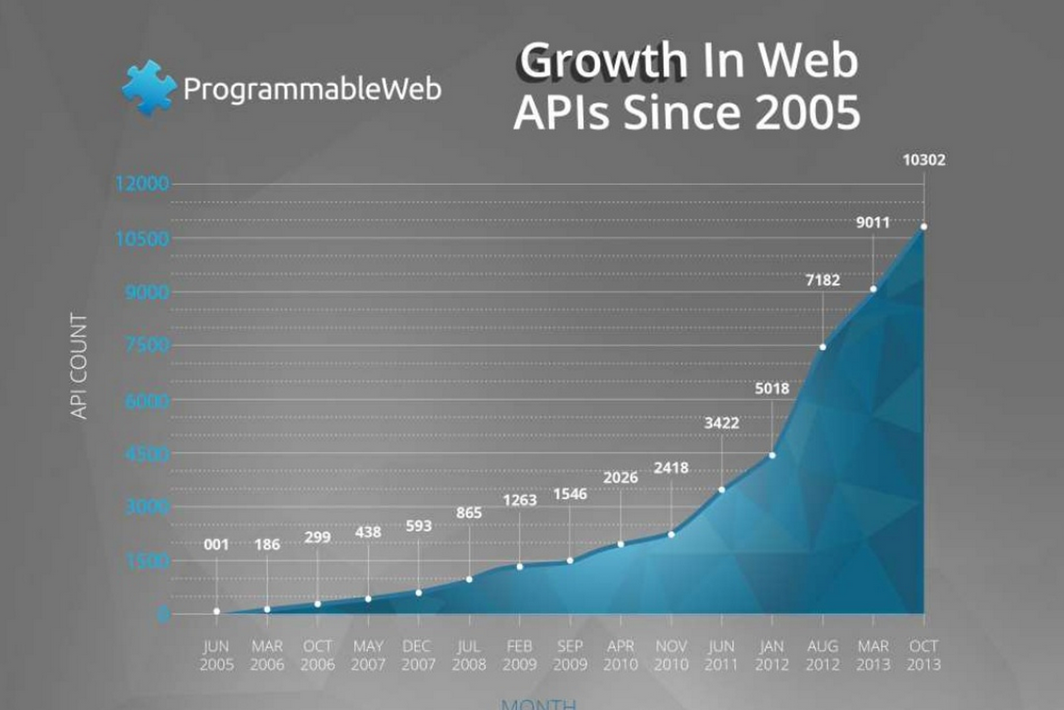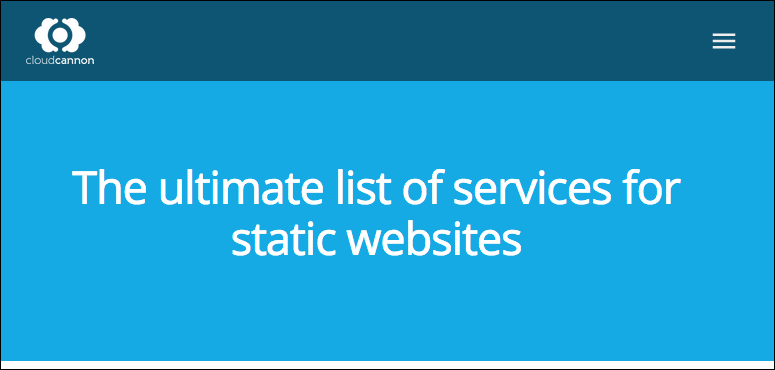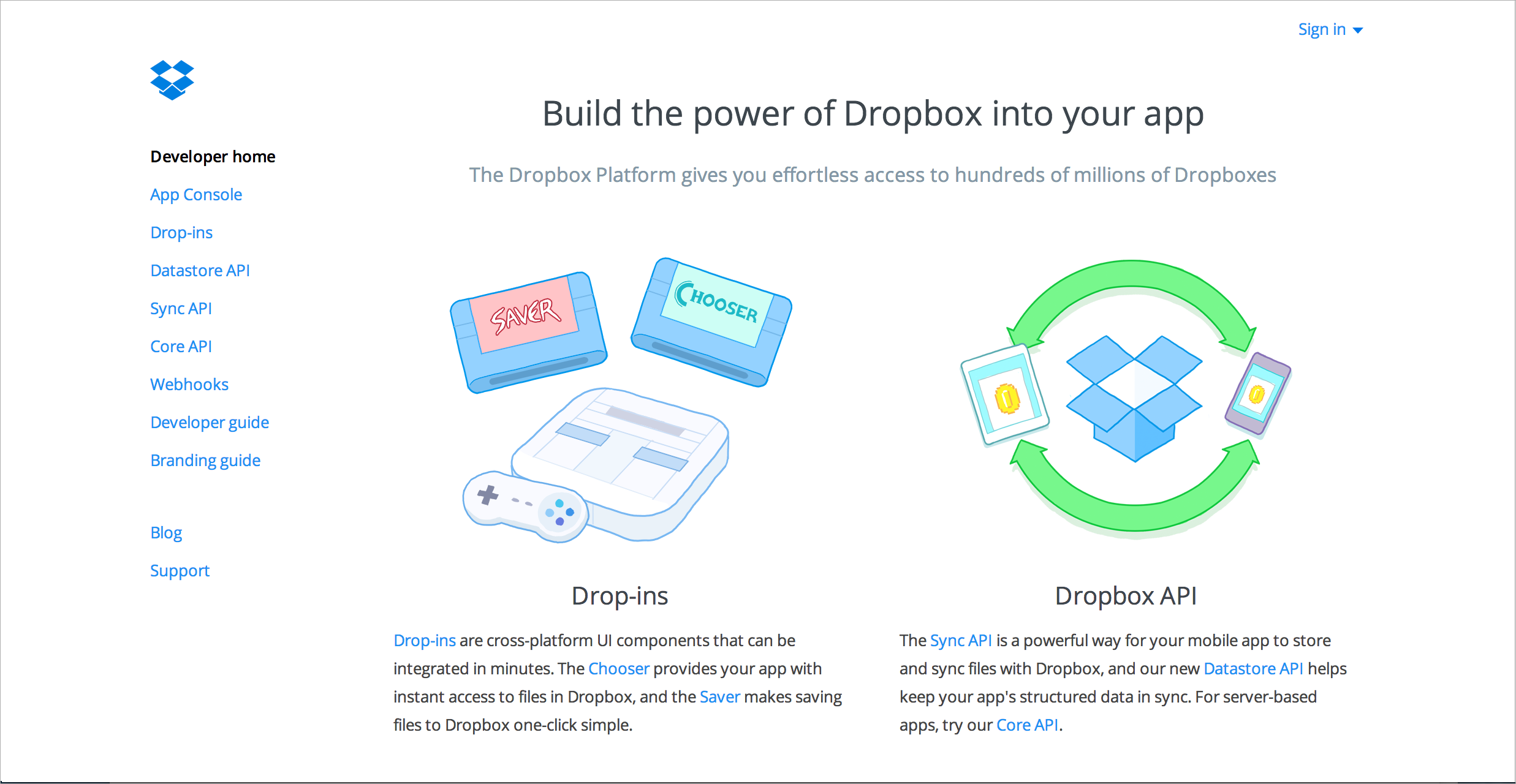The momentum with APIs is REST
The API landscape is diverse. To get a taste of the various types of APIs out there, check out Sarah Maddox's post about API types.
Despite the wide variety, there are mostly just two main types of APIs most technical writers interact with:
- Native library APIs (such as APIs for Java, C++, and .NET)
- REST APIs
With native library APIs, you deliver a library of classes or functions to users, and they incorporate this library into their projects. They can then call those classes or functions directly in their code, because the library has become part of their code.
With REST APIs, you don't deliver a library of files to users. Instead, the users make requests for the resources on a web server, and the server returns responses containing the information.
REST APIs follow the same protocol as the web. When you open a browser and type a website URL (such as http://idratherbewriting.com), you're actually making a GET request for a resource on a server. The server responds with the content and the browser makes the content visible.
This course focuses mostly on REST APIs because they're more accessible to technical writers, as well as more popular and in demand. You don't need to know programming to document REST APIs. And REST is becoming the most common type of API anyway.
Programmableweb API survey rates doc #1 factor in APIs
Before we get into the nuts and bolts of documenting REST APIs, let me provide some context about the popularity of the REST API documentation market in general.
In a 2013 survey by Programmableweb.com (which is a site that tracks and lists web APIs), about 250 developers were asked to rank the most important factors in an API. "Complete and accurate documentation" ranked as #1.
John Musser, one of the founders of Programmableweb.com, has also emphasized the importance of documentation in some of his presentations. In "10 reasons why developers hate your API," he says the number one reason developers hate your API is because "Your documentation sucks."
Since 2005, REST APIs are taking off in a huge way
If REST APIs were an uncommon software product, it wouldn't be that big of a deal. But actually, REST APIs are taking off in a huge way. Through the PEW Research Center, Programmableweb.com has charted and tracked the prevalence of web APIs.
eBay's API in 2005 was one of the first web APIs. Since then, there has been a tremendous growth in web APIs. Given the importance of clear and accurate API documentation, this presents a perfect market opportunity for technical writers. Technical writers can apply their communication skills to fill a gap in a market that is exploding.
Because REST APIs are a style not a standard, docs are essential
REST APIs are a bit different from the SOAP APIs that were popular some years ago. SOAP APIs (service-oriented architecture protocol) enforced a specific message format for sending requests and returning responses. As an XML message format, SOAP was very specific and had a WSDL file (web service description language) that described how to interact with the API.
REST APIs, however, do not follow a standard message format. Instead, REST is an architectural style, a set of recommended practices for submitting requests and returning responses. In order to understand the request and response format for the REST API, you don't consult the SOAP message specification or look at the WSDL file. Instead, you have to consult the REST API's documentation.
Each REST API functions a bit differently. There isn't a single way of doing things, and this flexibility and variety is what fuels the need for accurate and clear documentation. As long as there is variety with REST APIs, there will be a strong need for technical writers.
The web is becoming an interwoven mashup of APIs
Another reason why REST APIs are taking off is because the web itself is evolving into a conglomeration of APIs. Instead of massive, do-it-all systems, web sites are pulling in the services they need through APIs. For example, rather than building your own search to power your website, you might use Switftype instead and leverage their service through the Swiftype API.
Rather than building your own payment gateway, you might integrate Stripe and its API. Rather than building your own login system, you might use UserApp and its API. Rather than building your own e-commerce system, you might use Snipcart and its API. And so on.
Practically every service provides its information and tools through an API that you use. Jekyll, a popular static site generator, doesn't have all the components you need to run a site. There's no newsletter integration, analytics, search, commenting systems, forms, chat e-commerce, surveys, or other systems. Instead, you leverage the services you need into your static site.
CloudCannon has put together a long list of services that you can integrate into your static site.
This cafeteria style model is replacing the massive, swiss-army-site model that tries to do anything and everything. It's better to rely on specialized companies to create powerful, robust tools (such as search) and leverage their service rather than trying to build all of these services yourself.
The way each site leverages its service is usually through a REST API of some kind. In sum, the web is becoming an interwoven mashup of many different services from APIs interacting with each other.
Job market is hot for API technical writers
Many employers are looking to hire technical writers who can create not only complete and accurate documentation, but who can also create stylish outputs for their documentation. Here's a job posting from a recruiter looking for someone who can emulate Dropbox's documentation:
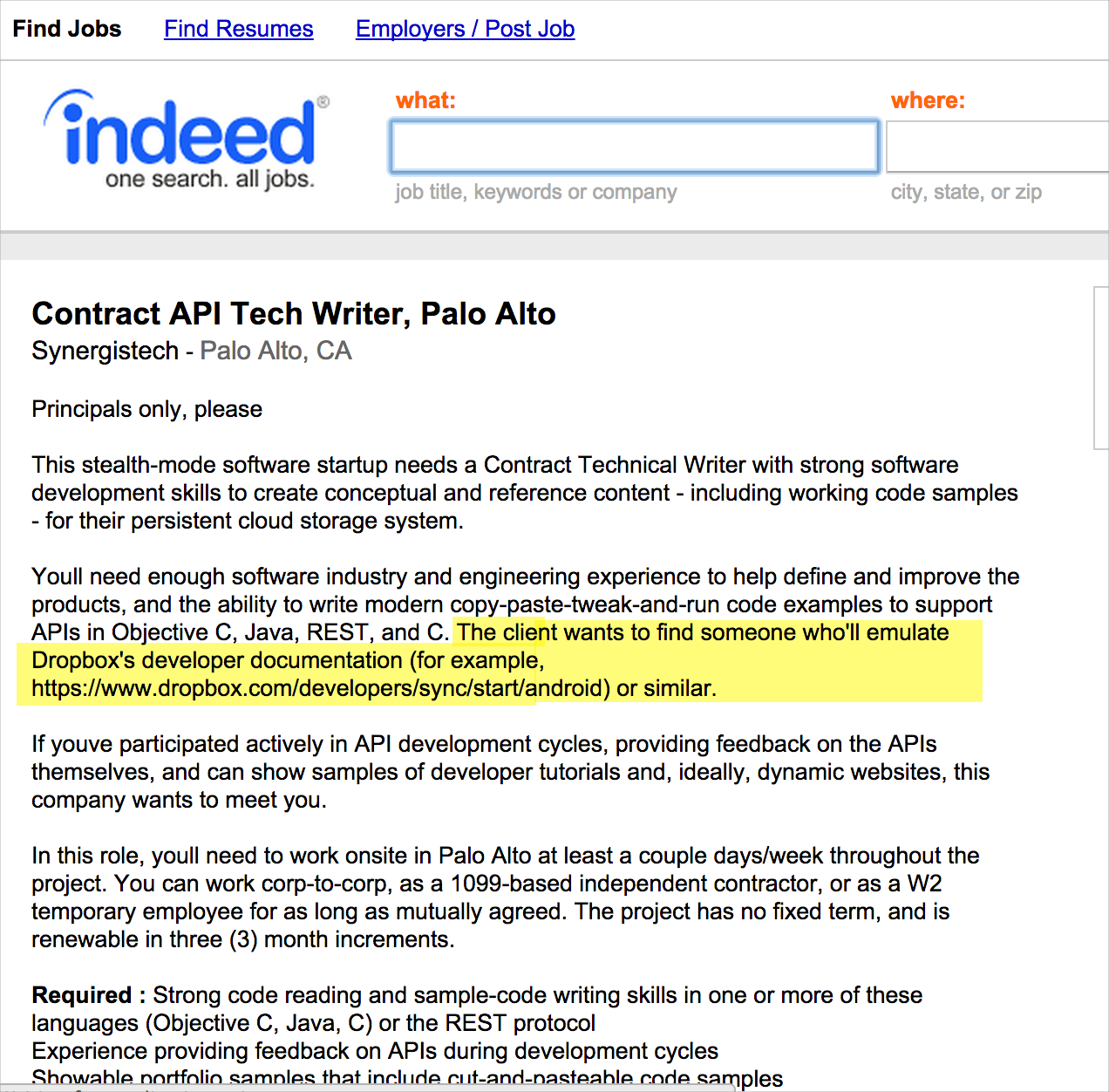
As you can see, the client wants to find "someone who'll emulate Dropbox's documentation."
Why does the look and feel of the documentation matter so much? With API documentation, there is no GUI interface for users to browse. Instead, the documentation is the interface. Employers know this, so they want to make sure they have the right resources to make their API docs stand out as much as possible.
Here's what the Dropbox API looks like:
It's not a sophisticated design. But its simplicity and brevity is one of its strengths. When you consider that the API documentation is more or less the product interface, building a sharp, modern-looking doc site is paramount for credibility and traction in the market.
API doc is a new world for most tech writers
API documentation is mostly a new world to technical writers. Many of the components may seem foreign. For example, all of these things differ from traditional documentation:
- API doc authoring tools
- Developer audience
- Programming languages
- Endpoint reference topics
- Ways the product is used
When you try to navigate the world of API documentation, the world probably looks as unfamiliar as Mars.
Learning materials about API doc are scarce
Realizing there was a need for more information, in 2014 guest-edited a special issue of Intercom dedicated to API documentation.
This issue was a good start, but many technical writers have asked for more training. In our Silicon Valley STC chapter, we've held a couple of workshops dedicated to APIs. Both workshops sold out quickly (with 60 participants in the first, and 100 participants in the second). API documentation is particularly hot in the San Francisco Bay area, where many companies have REST APIs.
In 2014, the STC Summit in Columbus held its first ever API documentation track.
Technical writers are hungry to learn more about APIs. To help address this ongoing need, I've created this material to teach technical writers about API documentation.
